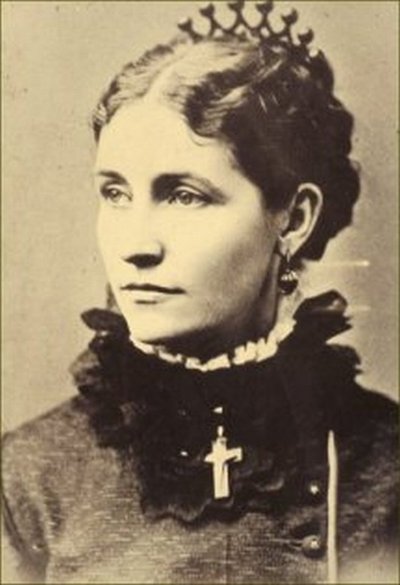Mary Julia Ledlie was born on January 26, 1848 in Springfield, Illinois to Julia Winn and John Collins Ledlie. In 1865 the family traveled from Illinois to the Gulf of Mexico where they boarded a ship to California - a journey that required a tedious overland crossing of the Isthmus of Panama. Once on the West Coast, the Ledlies settled in Sacramento where John took a job on a riverboat owned by Captain James Monroe McDonald, an early West Coast pioneer.
In 1886, twenty years after arriving in California, John Ledlie had become successful in the tanning business and the family moved to a large home in San Francisco, where Mary and her mother became proprietors of an exclusive boarding house catering to Naval officials and civic guests. A notable visitor to the San Francisco home was writer and horticulturalist Franklin Hermann Heald. In hearing from Heald of the developing colony of Elsinore, Mary purchased 1/16th of the old Rancho La Laguna that is now Elsinore valley. This property included a portion of the most fertile part of the valley and now is known as the Rippey, Root and Miller Ranches.
Another noteworthy boarding resident circa 1870, was Mr. Ledlie's former employer and long time associate, Captain James Monroe McDonald. Over the next twenty years, and despite their gap in age, Mary and James became intellectual companions, and on March 31, 1893, Mary Julia Ledlie was wedded to Captain James Monroe McDonald. Within the year, Mary's father's health declined and he died on February 1, 1894.
In 1898, Mary McDonald purchased the Franklin Heald Home in Elsinore - Casa De Campo - where her mother lived until her death in 1906. A year later, Mary's husband, James McDonald, also passed away. Upon his death, Mary took control of his estate which included a mining operation, timberlands in California and Oregon, and royalties from several patents for glass insulators used on telephone and power lines. From her homes in San Francisco and Lake Elsinore, Mary oversaw aggressive growth of the McDonald estate through wheat farming in San Luis Obispo County, spruce logging in Oregon, and a quicksilver mine in New Almaden.
Mary also took great personal interest in the arts and sciences and was an active participant in California's intellectual community. In the early 1900s, she provided funds for five scholarships and several endowed chairs at the University of California, and she supplied Pomona College with valuable books for use by faculty and students. She also donated heavily to the city of San Francisco, supporting a city orphanage and contributing to the 1915 Panama Pacific Exposition.

